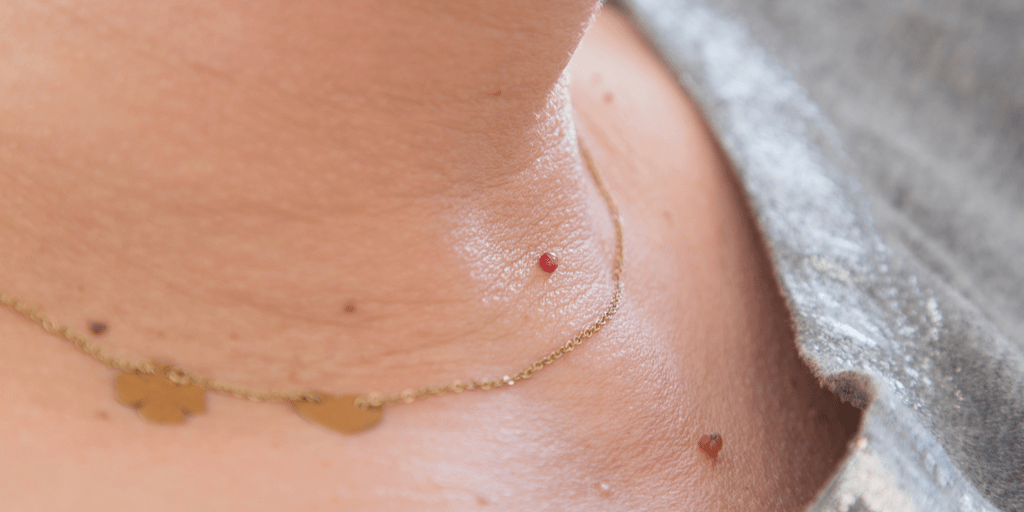There are literally hundreds of different kinds of lumps, bumps and cysts associated with the skin. Fortunately, the vast majority of these are harmless and painless, including skin tags. Skin tags usually don’t cause any pain, however, they can become irritated if anything, such as clothing, jewelry, or skin rubs against them.
With more than 3 million U.S. cases per year, here are few things to know about those pesky bumps.
1. What is a skin tag?
A skin tag (formally known as acrochordon) is a small flap of tissue that hangs off the skin by a connecting stalk and is one of the most common skin growths. While not normally dangerous, these bumps are very often irritating to people.
2. Where do they normally occur?
They are usually found on the neck, chest, back, armpits, under the breasts, or in the groin area.
3. What causes skin tags?
About 50% of all people have skin tags and appear most often in women, especially with weight gain, and in elderly people. Obesity, diabetes, aging, and rare genetic syndromes will increase the chances of someone having them.
4. At what point in life do they generally begin occurring?
At any point in life, we can develop them, however, we tend to gain more as we age—especially after age 50.
5. Are there any risk of complications?
Skin tags can become itchy, painful, and they often uncomfortably rub between clothing. They often are cosmetically displeasing for people. Although likely to be harmless, they can look similar to various types of dangerous skin cancers. For these reasons, they are commonly removed by dermatologists.
6. How do you remove skin tags?
When it comes to skin tag removal, there are a variety of methods your dermatologist can utilize to remove a skin tag including: shave excision, cutting it off with sharp scissors or a scalpel, cryosurgery (freezing it off), or with electrosurgery (burning it off with an electric current).
7. Who is prone to them?
People of all ages, including women, men, and children, very commonly present to the dermatology office for the removal of skin tags.
8. Can you just leave them in place?
Some people opt to leave them in place, while others feel relieved to have them removed for the reasons in the response to “5” above.
9. Will they continue to grow?
They may grow over time. Occasionally, they incompletely fall off.
10. What are the risk factors?
See “3” above. Unfortunately, even with appropriately managing weight and sugar intake, we may still acquire them.
Importantly, all skin tags should be evaluated. As previously mentioned, several types of dangerous skin cancers may appear similar to skin tags. So if you’re looking to get rid of skin tags, hesitate no further and schedule an appointment today! The dermatologists and providers at Affiliated Dermatology are the most capable and caring professionals who can accurately evaluate and manage this condition for you.



